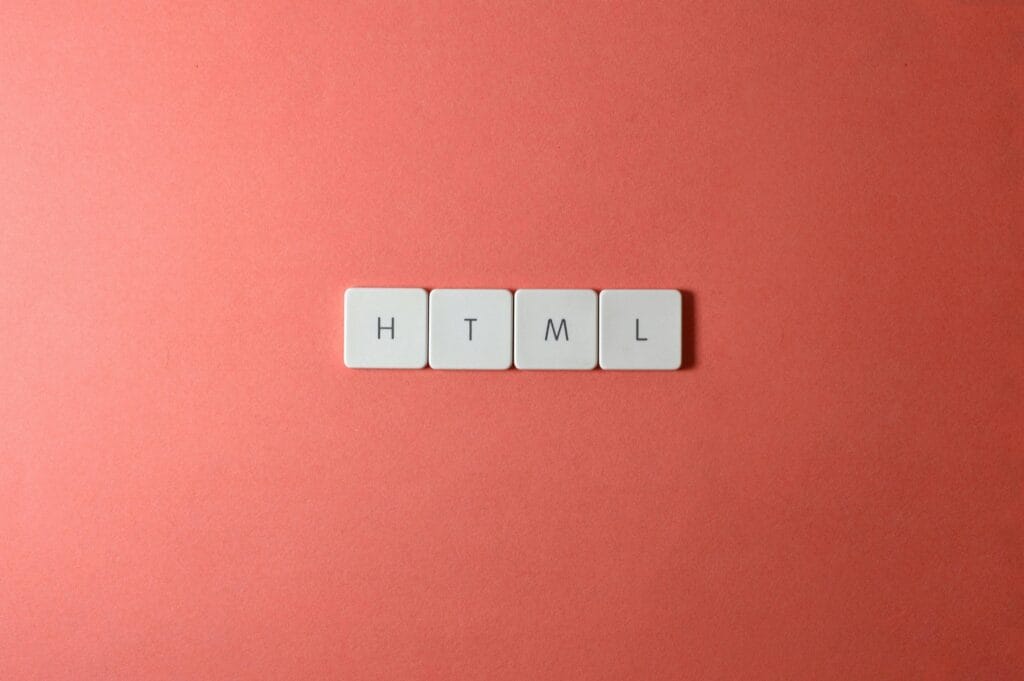Learn front-end vs back-end development – roles, skills, tools, salaries, and which path suits your career goals.
Front-end and back-end development are the two unseen but vital engines that power every website you visit, app you use, and online service you depend on.
Your digital experience is shaped by the front end, which includes the buttons, graphics, and seamless interactions you find enjoyable.
On the other hand, everything that happens behind the scenes, such as data management, request processing, and system maintenance, is powered by the back end.
This post will provide a straightforward explanation of the differences between front-end and back-end development.
You will discover what each side accomplishes, the abilities and resources they employ, and how they collaborate to produce the flawless online experiences we adore.
You’ll know by the end which route, logic-driven back end or design-focused front end, best suits your interests and professional objectives.
Front-End Vs Back-End Development – The Basics
What is Web Development?
Web development is the process of creating and maintaining websites and web applications, which are digital venues where people engage, purchase, study, and communicate online.
It includes everything from developing a site’s layout to ensuring that it runs smoothly, loads quickly, and stores data securely.
At its core, web development is divided into three main areas:
- Front-End Development: This is the user-facing side of a website, including everything you see and interact with, such as buttons, colors, text, and navigation.
- Back-End Development: The behind-the-scenes engine that stores, processes, and delivers data to the front end.
- Full-Stack Development: A combination of both front-end and back-end, allowing developers to build an entire web application from start to finish.
Consider it like a restaurant: the front end is the dining area where clients have access to the menu and enjoy the experience, while the back end is the kitchen where chefs produce the dishes.
Both must collaborate flawlessly to produce a gratifying dinner, or, in this case, a smooth, effective website.
What is Front-End Development?
Front-end development focuses on the client side of a website, which includes everything that visitors see, click on, and interact with on their displays.
It bridges the gap between design and functionality, transforming static designs into completely responsive, visually appealing, and interactive websites.
Front-end developers collaborate closely with designers and back-end engineers to ensure that websites not only look attractive but also function properly across devices and browsers.

Role of a Front-End Developer
A front-end developer is in charge of designing the visible elements of a website, such as the layout, navigation menus, buttons, forms, animations, and general user interface (UI).
Their primary goal is to provide a seamless and engaging user experience (UX). This includes the following activities.
- Translating design mockups into interactive web pages.
- Making websites responsive so they adapt to different screen sizes.
- Optimizing performance for fast loading times.
- Testing across browsers and fixing layout or compatibility issues.
In short, front-end developers are the creative technologists who make websites feel alive and easy to use.
Key Skills Required
To succeed as a front-end developer, you must have both technical knowledge and a keen sense of design. Here are the key skills for front-end developers.

1. Languages
HTML (HyperText Markup Language)
HTML is the foundation of the web, defining the structure and content of a webpage. HTML is used to generate all elements on a page, from headlines and paragraphs to forms and tables.
A solid understanding of semantic HTML is essential for online projects’ accessibility, SEO, and maintainability.
CSS adds life to HTML by manipulating its visual display. It works with layouts, fonts, colors, spacing, and responsive designs.
Knowledge of contemporary CSS methods such as Flexbox, Grid, transitions, and animations enables developers to create clean, professional, and adaptive designs that operate across devices.
JavaScript is the engine that powers dynamic, interactive web pages. It supports features such as real-time form validation, interactive maps, sliders, modal windows, and asynchronous content loading (AJAX).
Modern front-end development relies largely on JavaScript frameworks and ES6+ technologies to create scalable and maintainable applications.
2. Frameworks & Libraries
Frameworks and libraries enable developers to write less code and create more powerful apps. They offer pre-built components, structures, and best practices.
React enables developers to create reusable UI components for quick and engaging applications. Its virtual DOM boosts performance, and its ecosystem (Redux and Next.js) is popular in professional development, particularly for single-page applications (SPAs).
Angular is a comprehensive framework for developing complicated, large-scale online applications. It supports TypeScript, two-way data binding, dependency injection, and a robust CLI, making it perfect for enterprise-level projects.
Vue.js
Vue is a lightweight and user-friendly framework that combines the best of Angular and React.
It’s adaptable, simple to integrate into current projects, and appropriate for small to medium-sized applications. Its reactive data binding allows for fast and seamless UI development.
3. Tools & Platforms
Front-end developers rely on a set of tools to streamline development, testing, and collaboration.
Git
A version control system is necessary for tracking changes, collaborating with teams, and managing project histories. Platforms like GitHub, GitLab, and Bitbucket facilitate teamwork and enable code review and bug tracking.
Chrome DevTools
An essential browser toolkit for debugging, profiling performance, testing responsiveness, and inspecting network queries. It enables real-time editing of HTML, CSS, and JavaScript to speed up development and troubleshooting.
Figma
A collaborative UI/UX design platform that allows developers to turn designer mockups into working websites.
Its features include prototyping, versioning, and design handoff tools, which improve communication between designers and developers.
VS Code
A lightweight but powerful code editor with extensions for JavaScript, React, Angular, and CSS.
4. Soft Skills
Technical skills are vital, but soft skills often determine how effectively a developer works in a team or communicates ideas.
Creativity
Helps to create visually appealing interfaces, intuitive navigation, and interesting animations to improve the user experience.
Attention to Detail
Websites appear professional and polished when the design is pixel-perfect, with regular spacing, typeface, and alignment.
Collaboration
Front-end developers frequently collaborate with designers, back-end developers, content writers, and stakeholders. Effective communication ensures that the finished product fits both the design and functional specifications.
Apart from these soft skills, a front-end developer should have problem-solving, time management, and adaptability skills to perform the development task effectively.
Popular Front-End Job Titles
Front-end positions vary depending on firm size, project scope, and team structure. Understanding the distinctions might assist you in selecting a career path that aligns with your interests and skills.
Front-End Developer
This job is responsible for developing and implementing the user interfaces for websites and web applications.
Front-end developers use HTML, CSS, and JavaScript to create usable code from design mockups.
They frequently work with frameworks such as React, Angular, and Vue.js to ensure that the website is responsive, accessible, and runs effectively on all devices.
UI (User Interface) Developer
UI developers translate visual designs into interactive web interfaces. Their work connects designers and developers.
They emphasize ensuring that buttons, forms, animations, menus, and other interface elements are not only visually appealing but also useful and user-friendly.
Web Designer
Web designers combine creative and technical expertise. They are in charge of the overall appearance and feel of a website, which includes layout, color schemes, typography, and graphics.
While some web designers primarily create static mockups, many also have technical skills and can implement their designs directly using HTML, CSS, and basic JavaScript.
Front-End Engineer
Front-end engineers frequently work on complicated projects that require advanced architecture, performance optimization, and scalable design patterns.
They prioritize strong, maintainable codebases, good state management, and integration with back-end services. Their work ensures that large-scale programs function properly and efficiently.

Why Choose Front-End Development?
Front-end development is great for those who appreciate merging creativity with coding. It enables you to design the appearance, feel, and flow of digital experiences with which users interact every day.
Front-end development, which includes producing visually attractive websites, fluid animations, and responsive interfaces, combines art and technology.
It’s also a dynamic profession, with new frameworks, libraries, and tools being released on a regular basis, allowing developers to constantly learn, explore, and innovate.
For people who appreciate seeing their work come to life on screens and having a direct impact on user experiences, front-end programming can be both rewarding and creative.
What is Back-End Development?
Back-end development manages the hidden side of a website or application, which users never see but rely on every time they click, log in, or make a purchase.
It focuses on the server side, which handles data, logic, and communication between the website’s front end and database. Even the most beautiful website would fail to function without a solid back end.
Back-end developers guarantee that data is securely kept, rapidly processed, and properly provided to the front end.
They are the architects who ensure that everything behind the scenes works together to provide a consistent user experience.
Role of a Back-End Developer
A back-end developer builds and maintains the systems that power the front end. Their work involves the following tasks.
- Writing server-side code that handles requests and responses.
- Managing and connecting databases to store and retrieve user data.
- Creating and maintaining APIs (Application Programming Interfaces) to allow communication between front-end and back-end systems.
- Ensuring security, performance, and data integrity of applications.
- Deploying and maintaining applications on servers or cloud platforms.
Simply put, back-end developers make sure the app’s “engine” runs smoothly — ensuring that what users see on the front end actually works.

Key Skills Required for Back-End Development
Back-end development concentrates on the “behind-the-scenes” logic, data management, and server operations that power websites and applications.
To succeed in this sector, developers must have a combination of technical expertise and analytical thinking.
1. Languages
Python is extremely legible and user-friendly, making it an excellent choice for back-end programming.
Python’s frameworks, such as Django and Flask, make it easier to construct safe, scalable online applications ranging from APIs to sophisticated web platforms.
Java is commonly utilized in enterprise environments to run large-scale applications.
Its strong typing, robustness, and extensive ecosystem (Spring, Spring Boot) make it suitable for developing secure, high-performance systems that require dependability and long-term maintenance.
PHP
PHP remains a critical component of web development, particularly for dynamic websites and content management systems such as WordPress.
Frameworks such as Laravel offer modern, attractive syntax and tools for quick application development.
Ruby, particularly the Ruby on Rails framework, prioritizes simplicity and developer productivity. It’s especially useful for startups and projects that require rapid prototyping and clean, maintainable code.
Node.js is neither a language nor a framework; rather, it is a JavaScript runtime environment for the back-end.
Node.js enables developers to run JavaScript on the server. Its non-blocking, event-driven architecture makes it ideal for creating scalable APIs, real-time applications, and high-performance back-end services.
2. Frameworks
Express.js (for Node.js)
A lightweight, versatile framework for quickly developing APIs and web applications. Express makes it easier to manage middleware, server-side functionality, and routing in Node.js projects.
Django
A high-level Python framework that focuses on security, scalability, and rapid development.
Django includes built-in features for authentication, database management, and administrative interfaces, making it excellent for complex applications.
A Java framework for developing enterprise-grade applications. Spring Boot is popular among large businesses because it simplifies setup, dependency management, and production deployment.
A PHP framework centered on elegant syntax and developer-friendly tools. Laravel includes built-in routing, authentication, caching, and testing capabilities, making PHP development modern and efficient.
3. Databases
Relational Databases (MySQL, PostgreSQL)
Ideal for organized data with relationships, limitations, and consistency. These databases can handle complicated queries, transactions, and data integrity, making them appropriate for most enterprise applications.
NoSQL Databases (MongoDB)
MongoDB provides flexible, document-based storage that enables rapid development and scalability.
It’s ideal for dealing with unstructured data, JSON-like formats, and applications that require excellent speed on huge data collections.
4. Soft Skills
Logical Thinking
Back-end developers provide efficient data flows, algorithms, and application architectures. Strong logical reasoning guarantees that systems are stable, maintainable, and perform effectively under stress.
Problem-Solving
Debugging, optimizing performance, and resolving unanticipated server or database difficulties are critical. Backend developers frequently solve difficult issues involving numerous platforms.
Attention to Performance & Scalability
It is critical to design systems that can manage high traffic, scale smoothly, and retain speed. This includes optimizing searches, caching, load balancing, and creating scalable systems.
Collaboration
Working closely with front-end developers, designers, and product teams.
Popular Back-End Job Titles
Back-end responsibilities vary across organizations based on project complexity, system design, and company size.
While tasks frequently overlap, each title focuses on a different aspect of server-side development. Here’s an overview of the most prevalent roles.
Back-End Developer
A back-end developer is in charge of the server-side logic, databases, and APIs that run web and mobile applications. They ensure that data flows seamlessly between the server and the user interface.
Typical tasks include developing business logic, managing authentication, integrating third-party services, and optimizing server performance.
Back-end developers frequently use languages like Python, Java, Node.js, or PHP, and they work closely with front-end teams to ensure seamless functionality.
Database Engineer
Database engineers design, build, and maintain sophisticated data systems. They concentrate on designing databases for efficiency, dependability, and scalability.
Their responsibilities include query optimization, data migration, and maintaining data integrity through proper indexing and normalization.
They use technologies such as MySQL, PostgreSQL, MongoDB, and Redis, and they frequently work with back-end developers to match data models with application needs.
API Developer
API developers create and implement Application Programming Interfaces (APIs) that facilitate communication between software components.
Their responsibilities include developing RESTful or GraphQL APIs, handling authentication, managing versioning, and guaranteeing safe data transfers.
A solid understanding of HTTP protocols, JSON, OAuth, and microservices is required. API developers play an important role in providing interoperability across front-end interfaces, mobile apps, and third-party services.
Software Engineer
A software engineer has a broad scope, frequently working on both front-end and back-end development. They are in charge of the entire application development process, including system design and software architecture.
Back-end software developers are responsible for high-level system planning, code optimization, and module integration.
Their skill set often includes data structures, algorithms, and design patterns, making them critical for developing scalable and maintainable applications.
Why Choose Back-End Development?
Back-end development is great for people who appreciate problem-solving, reasoning, and system design.
It is about creating the hidden infrastructure that underpins user experiences, from payment processing and user data management to authentication and security.
If you enjoy building the engine that powers modern apps and ensuring that everything operates smoothly, safely, and efficiently, back-end development is a tremendously satisfying and intellectually engaging career path.

Front-End vs Back-End Development: The Key Differences
While both front-end and back-end developers help to build a comprehensive website or app, their focus, tools, and duties differ dramatically.
The front end focuses on what users see, while the back end ensures that everything works properly. Here’s a quick comparison to show you how they complement one another.
| Aspect | Front-End | Back-End |
|---|---|---|
| Focus | User Interface | Server Logic & Database |
| Core Languages | HTML, CSS, JavaScript | Python, Java, PHP, Node.js runtime environment |
| Tools & Frameworks | React, Angular, Figma, Vue.js | Django, Express.js, Laravel, MySQL |
| Goal | Create a seamless visual and interactive experience | Ensure functional efficiency, data flow, and system stability |
| Interaction | Directly with users via browsers | With databases, servers, and APIs |
| Career Path | UI/UX Developer, Web Developer, Front-End Engineer | Software Engineer, API Developer, Data Engineer |
Front-End Vs Back-End Salary Comparison
In today’s work market, both front-end and back-end developers are in high demand, and their pay often reflects their skill sets and expertise.
In India, entry-level front-end developers earn roughly ₹4-6 LPA, whereas back-end developers earn somewhat more, averaging ₹5-8 LPA due to the greater technical sophistication of server-side work.
Front-end developers earn an average of $70,000-$90,000 per year worldwide, whereas back-end developers frequently earn $80,000-$100,000 per year, depending on location and expertise.
However, salary is not only decided by role. Experience, particular skills (for example, React, Node.js, AWS), and firm type (startup vs MNC) can all have a significant impact on pay.
Full-stack developers, or developers who are proficient in both domains, frequently earn higher wages due to their versatility.
Front-End vs Back-End Career Growth
Both front-end and back-end professions provide significant long-term growth, although the paths can differ.
Front-End Developers can rise to positions such as UI/UX specialists, front-end architects, or product designers, with an emphasis on user experience and design systems.
Back-end developers can advance to become software architects, DevOps engineers, or data engineers, working with infrastructure, scalability, and complicated data solutions.
The industry is also moving toward full-stack development, in which specialists handle both front-end and back-end activities.
Combining abilities in technologies such as React (front end) and Node.js (back end) allows developers to create full web applications, which is extremely valuable in startups and tech-driven businesses.
Which Should You Choose?
The decision between front-end and back-end development is mostly dependent on your interests, skills, and career goals. Both pathways lead to satisfying employment, but the optimal option depends on what you enjoy most about web development.
If you enjoy design, creativity, and user experience, front-end development could be a good fit.
It enables you to control how users interact with websites by selecting colors, layouts, animations, and ensuring that everything looks and feels appropriate.
It’s great for anyone who enjoys visual problem-solving and bringing digital concepts to life.
Back-end development, on the other hand, may be more appealing if you’re more interested in logic, data, or system architecture.
You’ll focus on what happens behind the scenes, such as maintaining servers, databases, and APIs that keep online applications functioning smoothly. It is ideal for analytical thinkers who appreciate tackling technological issues.
Your career goals can also guide your choice.
Startups frequently want engineers who can manage various responsibilities; thus, a full-stack strategy (understanding both front and back end) can be extremely beneficial.
Large corporations typically feature more specialized responsibilities, allowing you to focus on one area and master it.
If you’re only beginning your career, front-end development is frequently the best place to start. The results are visual, allowing you to rapidly see how your code affects the user interface.
As your confidence grows, you may gradually investigate back-end concepts and work your way up to being a full-stack developer, which means you can construct a whole application from scratch.
Tools and Technologies You Should Learn
Whether you prefer front-end, back-end, or full-stack development, knowing the correct tools and technologies can help you code fast, communicate effectively, and stay ahead of the ever-changing web development scene. Here’s an overview of the most important tools for each side.
Front-End Development Tools
Front-end development tools assist developers in designing, building, and optimizing the user interface of web applications.
They improve workflows, increase cooperation, and make webpages faster and more dynamic.
1. Languages & Frameworks
HTML, CSS, and JavaScript
The foundation of every website.
- HTML structures the content.
- CSS styles it for visual appeal.
- JavaScript adds interactivity and responsiveness.
Together, they form the building blocks of all modern web experiences.
React, a popular JavaScript toolkit created by Facebook, allows you to easily create dynamic and reusable UI components. It’s ideal for single-page apps (SPAs) and works easily with tools like Redux and Next.js to scale.
Angular
Angular is Google’s extensive architecture built for large-scale enterprise applications. It provides two-way data binding, dependency injection, and a sophisticated CLI for project creation and maintenance.
Vue.js
Vue.js is well-known for its simplicity and flexibility, making it suitable for small projects or developers who are new to front-end frameworks. It integrates features from React and Angular, giving it a versatile option.
2. Design & Prototyping Tools
Figma and Adobe XD
These tools enable designers and developers to work together on UI mockups, wireframes, and interactive prototypes.
Figma’s cloud-based interface offers real-time collaboration, but Adobe XD seamlessly connects with other Adobe tools for advanced design workflows.
Canva
Without the need for complex software, this application allows you to create web banners, infographics, and images easily. Ideal for developers who need to generate quick assets for their projects.
3. Development Environments
Visual Studio Code (VS Code)
The preferred code editor for front-end developers. It has a large collection of extensions for debugging, Git integration, and live previews.
Its lightweight architecture and cross-platform interoperability make it suitable for any coding environment.
Chrome DevTools
DevTools, which is built directly into the Chrome browser, enables developers to analyze, debug, and test web applications in real time.
You can monitor performance, debug JavaScript, and optimize CSS and network consumption to reduce load times.
4. Version Control & Collaboration
Git & GitHub
Essential for modern web development. Git keeps track of code changes, whereas GitHub hosts repositories, manages pull requests, and enables collaborative workflows with CI/CD integration.
CodePen and JSFiddle
Online code editors allow you to experiment with HTML, CSS, and JavaScript samples. Ideal for creating rapid prototypes, sharing code samples, and testing new design concepts.
Back-End Development Tools
Back-end development tools fuel the server side of apps by managing data, APIs, authentication, and business logic. These tools make applications quick, safe, and scalable.
1. Languages & Frameworks
Node.js + Express.js
Node.js allows JavaScript to run on the server, whereas Express.js facilitates API and server creation with little configuration. This combination is ideal for scalable, real-time applications such as chatbots or streaming systems.
Python + Django or Flask
Python is known for simplicity and readability.
- Django is a high-level framework with built-in security and admin tools.
- Flask offers flexibility for developers who prefer lightweight, modular architectures.
Java + Spring Boot
Enterprises can rely on this sturdy infrastructure. Spring Boot automates configuration and dependency management for Java-based web application development.
PHP + Laravel
A traditional pairing for web development. Laravel’s beautiful syntax, built-in authentication, and ORM (Eloquent) make PHP development faster and easier to manage.
Ruby on Rails
A convention-over-configuration framework that prioritizes developer productivity. It enables rapid prototyping and clean, maintainable code, making it a popular choice among entrepreneurs.
2. Databases & Data Tools
MySQL and PostgreSQL
Relational database systems that can handle structured data, transactions, and complicated queries. PostgreSQL, in particular, is known for its advanced features like JSON storage and excellent ACID compliance.
MongoDB
A NoSQL database that stores data in a flexible, document-oriented format. Perfect for applications that handle unstructured data or require horizontal scalability.
An in-memory data store used for caching and increasing application performance. It is also useful for managing session storage and real-time statistics.
3. Development Environments
VS Code, IntelliJ IDEA, or PyCharm
The choice of an IDE often depends on the programming language.
- VS Code is lightweight and extensible.
- IntelliJ IDEA is powerful for Java and Kotlin development.
- PyCharm offers specialized tools for Python and Django projects.
Postman
An indispensable tool for testing and troubleshooting APIs. Developers can imitate API calls, evaluate answers, and automate testing processes.
Docker
Used for containerizing applications, ensuring that code runs consistently across different environments — from local machines to production servers.
4. Collaboration & Deployment Tools
GitHub and GitLab
Beyond version control, these technologies provide CI/CD pipelines, issue tracking, and deployment automation to assist teams in managing continuous integration and delivery.
AWS, Google Cloud, and Microsoft Azure
Leading cloud service companies offer scalable hosting, database management, and serverless computing solutions. They are vital for delivering and managing modern web applications.
Jira and Slack
- Jira: A project management tool for tracking development progress and managing agile workflows.
- Slack: A communication hub that integrates with GitHub, Trello, and CI/CD tools to keep development teams in sync.
Mastering these skills can not only increase your productivity but also prepare you for a job. Begin small by learning the basic languages and frameworks, and then gradually add tools for testing, deployment, and collaboration.
With the proper stack and constant practice, you’ll be able to create professional, high-performance web applications from start to finish.
Full Stack Development: Bridging Front and Back Ends
Full-stack development is the process of merging front-end and back-end expertise to create comprehensive web applications.
A full-stack developer can create a visually appealing user interface, handle server-side functionality, manage databases, and guarantee that all components communicate properly.
Their adaptability makes them extremely desirable in both startups and major corporations.
Full-stack developers frequently use common technological stacks, which are predefined combinations of front-end, back-end, and database technologies. The stacks listed here are among the most popular.
- MERN Stack: MongoDB, Express.js, React.js, Node.js – perfect for JavaScript-based full-stack development.
- MEAN Stack: MongoDB, Express.js, Angular, Node.js – ideal for enterprise-scale apps using Angular for the front end.
- LAMP Stack: Linux, Apache, MySQL, PHP – a classic stack for building dynamic websites and server-side applications.
Full-stack developers have good job prospects because firms are increasingly looking for specialists who can manage numerous layers of an application.
Full-stack developers might work as web developers, software engineers, or technical leaders, and their comprehensive skill set frequently allows for speedier professional advancement.
Final Thoughts
Web development is fueled by two vital components: front-end and back-end development, each of which plays an important part in building seamless digital experiences.
The front end focuses on what consumers see and interact with, with a strong emphasis on design, interactivity, and user experience. The back end manages server-side logic, databases, and data flow to ensure that applications execute smoothly and safely.
Their skill sets and tools differ significantly. Front-end developers deal with HTML, CSS, JavaScript, and frameworks like React or Angular, whereas back-end developers use languages like Python, Java, and PHP, as well as databases and server frameworks.
Full-stack developers possess both skill sets, making them adaptable and valued in the employment market.
Consider your hobbies and strengths when deciding which path to take: creativity and visual design point toward the front-end, logical problem-solving and data management point to the back-end, and those who enjoy both can pursue full-stack development.
Finally, understanding these jobs allows you to make an informed decision and create a professional path that aligns with your objectives.
FAQ
Is front-end development easier than back-end development?
Front-end is often more visual and design-focused, while back-end requires deeper logical and database skills. Ease depends on your strengths.
Can a front-end developer become a back-end developer?
Yes, many developers transition over time or learn both technologies to become full-stack developers.
Do I need a degree to become a front-end or back-end developer?
No, you can learn through online courses, bootcamps, and projects — what matters most is your portfolio.
Which pays more — front-end or back-end development?
Back-end roles often offer slightly higher salaries, but it depends on location, experience, and tech stack.
Which is better for freelancing — front-end or back-end?
Front-end development tends to have more freelance opportunities due to the high demand for website and UI design projects.
Share Now
More Articles
NodeJS vs ReactJS – Which Is Right For Your Next Project?
AI in Programming: 7 Game-Changing AI Coding Tools You Should Try
11 Best NextJS Courses and Certifications for Developers

